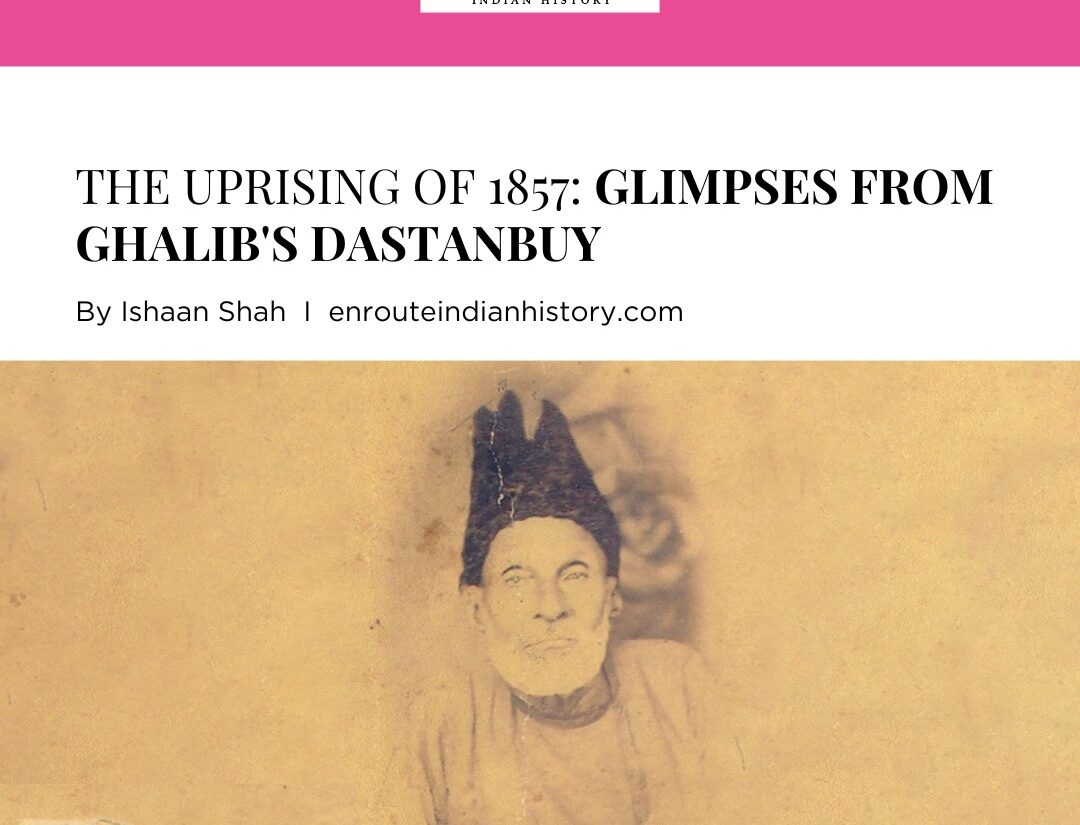
The trend of gifting and raising exotic animals has a long history. Even today, world leaders exchange animals as token of love, appreciation and friendship. This pattern of keeping exotic animals is especially famous in royalties of middle-east. The concept of private-zoo, as elite as it sounds, reflects upon the character of the leader greatly. India too has witnessed this exotic lifestyle of leaders, especially during the transition period from the crown rule. Former prime minister, famously known for his love for living beings in general, so much so that his birthday is today celebrated as children’s day, was especially fond of animals. His love for golden retrievers was evident with their evergreen presence in his abode, Teen Murti Bhawan. Through this article we dwell into the world of Nehru and his pets, domestic and exotic, all of whom he loved dearly and made his companions till his death bed.

Jawaharlal Nehru with Raja and Rani, 2-4month old tiger cubs, presented to him by Algural Shastri, U.P. Forest Minister, New Delhi, 17 May 1961
THE TRADITION OF GIFTING EXOTIC ANIMALS
The need for exotic animals has been satiably satisfied on a significant scale since antiquity. In particular, rulers saw owning these animals as a way to assert their dominance over and power over other people. Giving exotic animals as gifts was, in a sense, a diplomatic ploy. Throughout the Middle Ages and the Early Modern Era, this goal persisted. But throughout time, the assortment of these rarities shifted. The opening of new maritime lanes greatly facilitated access to imported commodities. In a sense, demand for these objects rose concurrently with their availability.
Menageries were constructed by rulers, who also arranged animal contests. Scholars researched exotic creatures and tried to bring about a systematized order for them. Individuals obtained ownership of gorillas.(Khalow, 2018). There was a well-established system for importing exotic animals in antiquity.
For instance, live imports of foreign dogs, horses, silkworms, lions, camels, and elephants were made throughout the Classical Period. They fulfilled military, diplomatic, economic, and representative functions (Hornig ,2000). Among other things, the practice of “animal baiting,” or “venationes,” in Roman amphi-theaters may be confirmed archaeologically. The people found enjoyment in the harsh practice of assembling various animals for combat.
Numerous creatures perished. The range of animals can be seen in the bones of tigers, bears, lions, and panthers that were found during the Colosseum excavations in Rome (Mocchegiani Carpano 1974).

From Medieval times, there is less and less evidence supporting the transportation of exotic animals after the fall of the Roman Empire and during the Middle Ages. The records that are currently available speak of the trading of magnificent creatures like the elephant Abul-Abbas, which Charlemagne received as a gift in AD 802 (Hack ,2011). The Abbasid-Carolingian relationship, which lasted for three generations from the second half of the eighth to the first half of the ninth century, preserved Abul-Abbas as a typical diplomatic gift5 (ibid). Rulers used such institutions to demonstrate their wealth, power and reputation. The vast movement of people, goods, and animals across even greater distances than during the Middle Ages got its start in the sixteenth century.
Around this time, the hunt for a sea passage to India was successful, and the Europeans experienced wealth from not one, but two continents: Asia and America. As a result, there was a rise in the desire for exotic plants, animals, and other items.
During this early stage of expansion, princely courts, scholars, and wealthier families established a fast growing desire for exotic animals, which were primarily landed in Lisbon by ship (de Tudela and Gschwend 2001) Before putting them on board, it seems to have long been standard practice to kill and mount them. On occasion, locals who sold the ready-to-ride animals to foreigners—mostly without feet or wings, and occasionally even without heads—performed this preparatory labor (George, 1980). The act of clipping and drying birds resulted in adverse effects on the understanding of animals. It was a long-held misconception among European naturalists that birds of paradise had no feet at all!
Thus exotica have been in demand since Antiquity. With their help, one could gain prestige and influence, forge bonds, make money and expand knowledge.(Khalow,2018)
ELEPHANT DIPLOMACY
Elephant was identified with Indian geographical imagery even before colonial imaginations. This was the result of orientalist gaze. Following independence, India—one of the major suppliers of elephants to Europe—began to donate elephants to war-torn zoos as envoys of peace and goodwill rather than as merchandise because of exigency. This challenged the long-standing dominance of the environment. (Ghosh, 2022) Nehru successfully incorporated a colonial icon and rebranded it as nation’s diplomatic emblem.

More than 20 nations, including the United States, the United Kingdom, Russia, France, Iran, Canada, the Netherlands, and Japan, have received elephant gifts from India. Likewise, elephants have been employed by China, Thailand, Vietnam, and Sri Lanka in soft power diplomacy. In 1953 and 1960, Ho Chi Minh delivered elephants to Mao Zedong.
The children of Japan wrote to Jawaharlal Nehru, the first Prime Minister of India, in 1949 with an almost bizarre request: they hadn’t seen a live elephant and asked that he bring one to them! At the time, he started working right away to find and ship an elephant from Mysore to Japan over the seas! Dedicated to his own daughter, Indira was given to Tokyo Zoo with a message that established the precedent for similar “jumbo” presents, aimed “to the children of Japan.” The elephant is strong but compassionate, wise, and patient. I’m hoping that we will all grow to develop these qualities as well.
This gifting of elephant was part of Nehru’s master diplomacy plan. Tokyo’s mayor gave the order to execute the three elephants housed at Japan’s oldest zoo, Ueno Zoo, which is situated in the northern section of the city, in 1943 while World War II raged on. When these elephants got loose during air attacks, people in the area were worried about what would happen to them. Two of the three elephants, Jon (male) and Tonkī (female), were imported from India in 1924, while Hanako (third) was brought from Thailand. They became into highly well-liked Ueno Zoo attractions throughout time, particularly with small children. However, the Tokyo mayor showed them no pity and gave the order to shoot them because he was afraid they would flee during bombing attacks. This is where the story becomes captivating. Time Magazine reports that Himansu Neogy, a young and affable exporter from Calcutta, who had taken a break from his business trip to tour the city’s schools, became friends with Tokyo moppets recently. They posed with him for group photos and offered him bouquets of flowers. They pleaded with Neogy to get then-prime minister Nehru to provide them an Indian elephant as they were ready to return to India.
A packet containing 815 letters from children in Japan was deposited by Neogy in Jawaharlal Nehru’s office, approximately one week before to the publication of the Time Magazine piece. After receiving these letters, Nehru gave the Ministry of External Affairs instructions to work with the princely nations to arrange for funding and transportation in addition to obtaining an elephant. After naming the elephant Indira after his daughter, Nehru purchased it from the former royal state of Mysore. Only a few months after Nehru got the letters, the elephant Indira travelled to Tokyo. Indira could only obey instructions in Kannada at the time, so Aiyar reported how “the two Indian mahouts who had accompanied the elephant from Mysore” trained her two Japanese handlers the language. It took the two Japanese handlers two months to get fluent in Kannada and to establish some kind of contact with her. When Prime Minister Nehru and his daughter Indira visited Japan in 1957, some eight years later, Indira got to see her namesake in person. Since then elephants have been a symbol of Indo-Japanese friendship and Indira was the living emblem of the same till her death.
following this, children across the world, from different royalties started writing letters to Nehru, expressing their desire to own an elephant. Nehru tactically combined this innocent desire and combined it with global politics. He contacted princely states and started sending elephants to countries like Canada, the Netherlands and Berlin. This put out a global gesture of goodwill and kindness. (Wangchuk,2020)
NEHRU’S PETS

Nehru’s residence at the Teen Murti Bhawan was always occupied by important diplomats, ministers, world leaders, and animals. From all over the world, from pandas to tiger cubs, local Sahiwal cows, all could be traced in the yard of his residence. He has all types of turtles, birds, peacocks, and various small creatures. Nehru was especially fond of dogs. He owned many Golden Retrievers. The dog was highlighted by Nehru’s personal secretary Mathai in his book “My Days with Nehru.” In 1955, Mathai said, he purchased a golden retriever puppy for the then-young Indira Gandhi in Hoshiarpur, Punjab, when the family’s cherished dog, Lassie, passed away. She gave the puppy the Russian name “Pepita Nichivo,” which would later be abbreviated to Pepi. Mathai also wrote about Madhu, another pet adopted by the Nehru household. She was a golden retriever as well. “Madhu and Pepi became well-known as Nehru’s dogs and two of the most photographed ones,” the author stated. And they were captured on camera. Even a picture of Jackie Kennedy, the former US First Lady, cuddling Nehru’s dog at the PM’s mansion in 1962.
Naturally, foreign dignitaries were not the only ones giving Nehru’s pets affectionate pats. Socialist leaders also began to criticize Nehru and the Congress party specifically because of them. Socialist leader Ram Manohar Lohia criticized Nehru’s leadership in 1963 when JB Kripalani presented the first-ever no-confidence motion on the Lok Sabha floor. Lohia made the comparison between Nehru’s pet expenditure and the poverty of India.(Chakrobarty,2022)
MORE ON TEEN MURTI BHAWAN
This construction is a 30-acre vast land, located in central Delhi. This property has been ever occupied by important leaders since its construction in the Tughlaq Dynasty, by Feroz Shah Tughlaq. Today, the ‘Bhawan’ is famously associated with former PM Jawaharlal Nehru, who spent the last 16 years of his life at this place, till his death in 1964. Soon after, under the leadership of former President S. Radhakrishna, Nehru’s room was converted into a museum space for all the see, and the Bhawan property into a library space to encourage studies of the Nehruvian Era and to ensure the museum is maintained as well. After the inauguration of this memorial museum in 1964 as ‘The Nehru Memorial Museum and Library Society’, the legacy of memorials continued with the curation of former PM and Nehru’s daughter, Indira Gandhi’s bedroom as well. In 1966, a different institution within the walls of Bhawan was established. Nehru planetarium was also established under Nehru’s name to honor his love and unconditional support for technology and innovation.

Teen Murti Bhawan was originally built as the residence of the Commander-in-chief of the British Army. It was built by English soldier and abled architect, Robert Tor Russell, who is also credited with the construction of Connaught Place and Pataudi House, and was called the Flagstaff House. Later it was named Teen Murti Bhawan, to commemorate the Jodhpur, Hyderabad, and Mysore Lancers, who fought fearlessly in World War II, after the teen statues built outside the Bhawan by Leonard Jennings. These statues boast a blend of Victorian and French architecture.

The culture of exchanging exotic animals has a long history that traces back to civilizations as early as the Romans. The act to adopting and loving pets, especially the ferocious one’s is a grand act of royal compassion and indicates the humility of the prominent figure. Nehru was no exception to this. Under his leadership, in collaboration with VP Menon used animals as a way of establishing global diplomacy. Before independence, exotic animals were exported by the imperial rule for decorative and symbolic purposes. This trade was intelligently tweaked to fit the Indian benefit tangent. Apart from his professional love for animals, Nehru surrounded himself with animals in his personal sphere too. His love for dogs have been constantly under attack by opposition considering the pampering showered upon them by the former Prime Minister. Politics or personal sphere, Nehru and his animals have left a legacy of international and domestic significance.
REFERENCES
https://www.livemint.com/Multimedia/Nl2thJvsNbktoiHCIpPh8J/Chacha-Nehru-and-his-furry-friends.html
https://www.thequint.com/news/india/decoding-the-history-behind-the-disputed-teen-murti-bhavan
| Kahlow, S., Thoughts about Supply and Demand Based on Archaeological Finds. SEA AND LAND, p.87.
Christine Brandon-Jones. (1997). Edward Blyth, Charles Darwin, and the Animal Trade in Nineteenth-Century India and Britain. Journal of the History of Biology, 30(2), 145–178. http://www.jstor.org/stable/4331430 https://www.thehindu.com/opinion/open-page/a-case-of-animal-diplomacy/article67142986.ece https://www.indiatoday.in/fact-check/story/nehru-dog-plane-photo-viral-real-story-2003930-2022-09-23 |
|
| https://content.time.com/time/magazine/article/0,9171,940706,00.html |






















